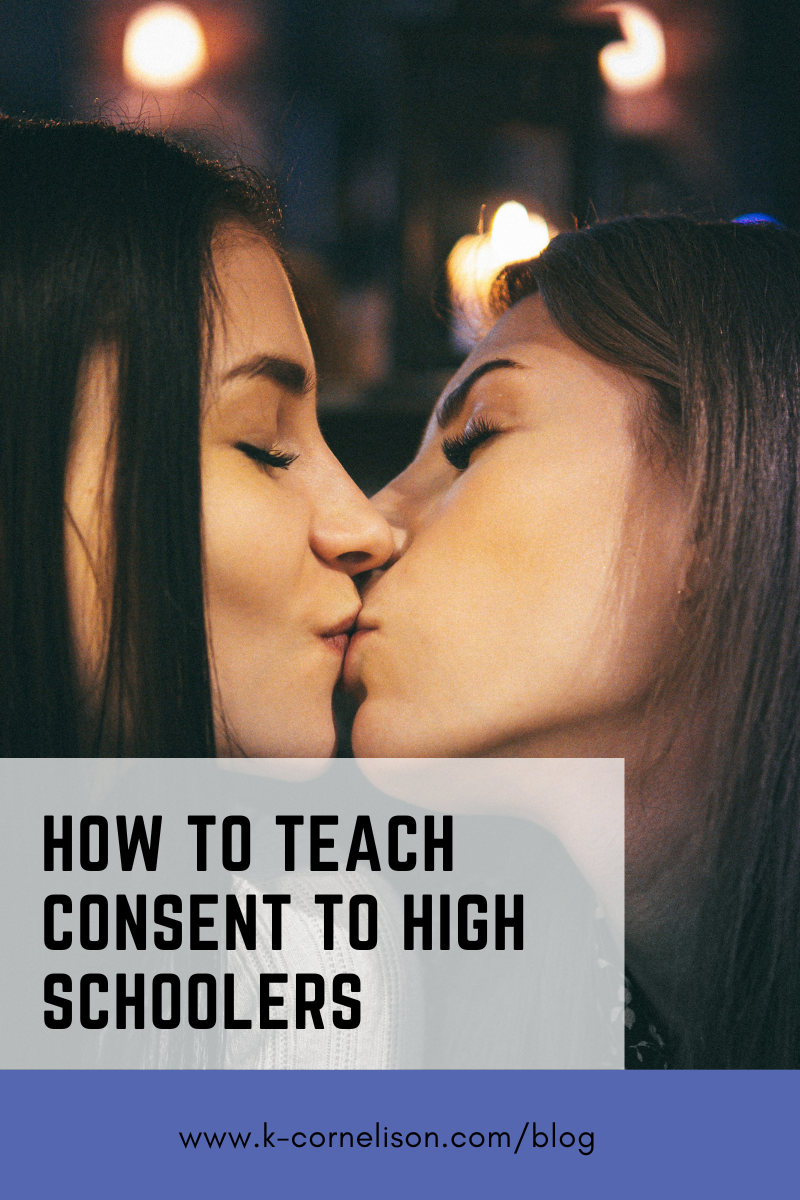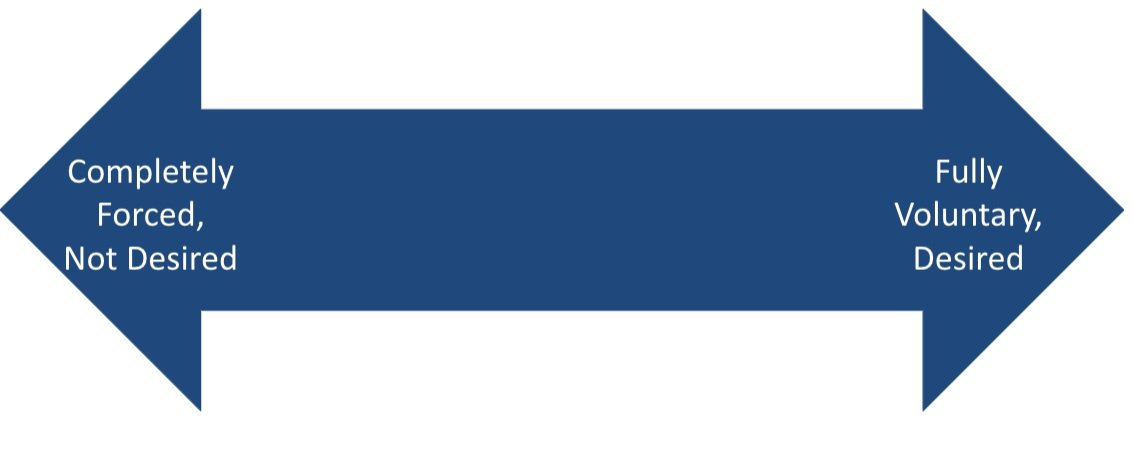How to Teach Consent to High Schoolers
When I was teaching dating violence and sexual assault prevention in schools, one of my favorite things to talk about was consent. Not only did teens have a TON of questions, but it was also always a lively discussion that focused on what teens should do, and not solely on what they shouldn’t. Here are some of my tried and true strategies for teaching consent to high schoolers (some of these can also work for younger youth, just gauge where they are. You might have to have some additional conversations leading up to this).
What is Consent? (and how to explain it to teens)
First and foremost, we need to define consent. For teens, this is how I like to break it down:
enthusiastic, clear, open and honest communication between partners about exactly what they want and don’t want
able to be given only when there are no negative consequences or perceived consequences for saying “no” (for example, if I’m worried my partner will break up with me if I don’t engage in sexual activity with them, that’s not consent)
active, not passive (silence ≠ consent)
necessary for every sexual act (previous consent does not mean continued consent)
not coerced (no begging, bribes, threats, guilt), not “giving in” or “giving up”
Another fun way to explain consent is with the acronym FRIES (credit to Planned Parenthood):
It’s also important to discuss instances where consent cannot be given:
Under age: Just to make things confusing, every state has different laws regarding what age someone needs to be to be able to give consent for sexual activity. Some states determine this solely by age, others take into account the ages of both partners. In short, it’s confusing. You can read more about your state’s specific laws on age of consent here.
When explaining this to teens, I like to first ask them WHY laws like this might exist. Usually they get it: to protect kids, to keep vulnerable people safe. I also prompt them to think about age gap relationships. For example: what kinds of things does an 18 year-old have access to that a 15 year-old doesn’t? They can vote, drive, they can have different types of jobs, access to more money, etc. Then we talk about how this can create a power difference between partners that makes consent tricky anyway. Youth can often get caught up in the legality of it all and I find that refocusing on the why and the ethical reasons for the laws helps them make sense of it.
Under the influence: If someone is under the influence of drugs or alcohol, they are not able to give consent. Of course, this brings up a lot of questions for teens: How drunk is too drunk to give consent? What if both people are drinking/using drugs?
Again, I like to shift them to thinking about the WHY: people aren’t always thinking clearly when they’re under the influence. They may not be fully aware of their wants at that moment AND you might not be able to assess a partner’s nonverbal cues to tell if they are giving consent or not. If someone is intoxicated or incapacitated, it’s not a good idea to try to engage in sexual activity with them. I always tell teens - if you’re not sure, it’s better to wait until you’re both sober. If they still are interested then, great!
Coercion: Coercion is mentioned in both my definition and the FRIES definition above but it’s worth repeating. If someone feels like something bad is going to happen if they say no - that’s coercion. Even if they say “yes” but feel like they were pressured.
In each of these three cases, I like to redirect youth away from the legal consequences and talk more about the ethical and emotional impacts. Most young people want to do the right thing - getting them to tap into their empathy and think about the other person, helps them wrap their heads around why consent matters and how to assess if they have consent or not.
But this is so awwwwwwwwkward…
Without fail, someone will say something along the lines of, “but talking about consent is so awkward!” And honestly, that’s a fair concern! In the US, we don’t see a lot of modeling for how to talk openly about relationships, sexuality, sexual health, or consent. So much of the education for teens is “don’t do XYZ.” So when I get this comment, I validate it: “Yes, sometimes these conversations can be awkward. But would you rather be awkward for a few moments or risk doing something that your partner doesn't want to do?” That’s a pretty clear choice to me! And if they’re not up for having the conversation, I encourage them to consider if they’re even comfortable enough to engage in sexual activity with this partner if they can’t have a short conversation about consent.
Teaching Consent Activities
Once you’ve covered the definitions, here are a few great activities to dig deeper into the topic of consent.
Communication Breakdown
This activity is a good warm up and is fun as an ice breaker to lead into some of the more complex/serious activities and conversations. You could even do this activity as a warm up before going into the consent definitions. Here are the instructions:
Everyone needs to grab a piece of paper and something to write with
Pair off into groups of 2
Pick someone to give the instructions, and the other to receive the instructions
The “giver” is going to draw a simple design on their piece of paper
They will then instruct the “receiver” how to draw that exact design
Partners cannot look at the other’s paper until the very end of the activity
Compare drawings
Discussion:
Did the picture look anything like the original?
If so, how did you communicate with your partner? Were you specific? Detailed? Clear?
It not, how could you improve?
If you were the “receiver” - did you ask questions if unsure and/or confirm commands? Why or why not?
Could you understand what your partner wanted you to do?
How does this relate to consent?
Consent/Not Consent
This activity can really get into the heart of what consent is and is not, including a more nuanced discussion about nonverbal communication.
Write the following on a white board or piece of flip chart paper:
Start with the CONSENT column. Ask participants the following questions and record their responses:
How would someone know they have consent? From body language and facial expressions only?
What happens in movies/tv before people engage in sexual activity?
What would people SAY to give consent?
Move on to the NOT CONSENT column. Ask participants the following questions and record their responses:
What would someone do if they were not giving consent or were uncomfortable? From body language and facial expressions only?
What would people SAY?
Discussion:
Who is responsible for getting consent? Why?
Sometimes a person might not say no even if they don’t want to. What are some reasons a person might not say “no” even if they don’t want to do something?
Which signs do people use the most to communicate consent (physical or verbal)? Why?
Can someone change their mind after they have given consent? Why or why not? (Emphasize that
What are some benefits to getting verbal consent?
During each of the both discussions, emphasize the following:
The person who is initiating sexual contact is responsible for getting consent.
Consent is needed at each new level of intimacy and just because someone has given consent for sexual activity in the past, doesn’t mean they’re giving consent now.
Someone can always change their mind after they’ve given consent and that needs to be respected.
Verbal consent is almost always the most clear and least risky way to get consent. If you're unsure about how your partner is feeling or if they’re wanting to continue, stop and check-in.
Choice and Coercion Continuum
I love this activity to get into the nuances of different scenarios and gray areas when it comes to consent.
Create a variety of different scenarios about teens engaging in dating, relationships, and intimacy. Be sure to vary the situations and include things like long-term dating partners, age differences, hookups, use of drugs/alcohol, coercion, etc. Also ensure that the characters in the scenarios represent a diversity of races, genders, and sexual orientations (beware of reinforcing gender stereotypes here).
Draw a double-sided arrow on the white board on flip chart paper that looks like this:
Put youth into small groups and give them 2-4 different scenarios to discuss along with some tape. Once they’ve discussed the scenarios, have them tape the scenario up based on where it falls on the completely forced/not desired to fully voluntary/desired continuum.
Discussion:
Was consent given in this scenario?
How do you know?
If not, at what point did the situation become a yellow light and then a red light?
Teaching consent to teens is not just about defining consent but fostering a deeper understanding of respect, communication, and empathy within relationships. By breaking down the concept of consent into clear, relatable terms and engaging in open discussions, we empower teens to navigate complex situations with confidence and integrity. While these conversations may initially feel awkward, they are crucial for promoting healthy relationships and preventing instances of dating violence and sexual assault. I hope these activities give you a solid foundation for starting to have these conversations with the young people in your life.
Interested in learning about even more great activities for teaching consent like the Consent Traffic Light, Yes/No/Maybe, and Accepting a “No”? Reach out to me about a live training on Teaching Consent to Teens. You can also access suggestions on teaching teens about dating violence here.





